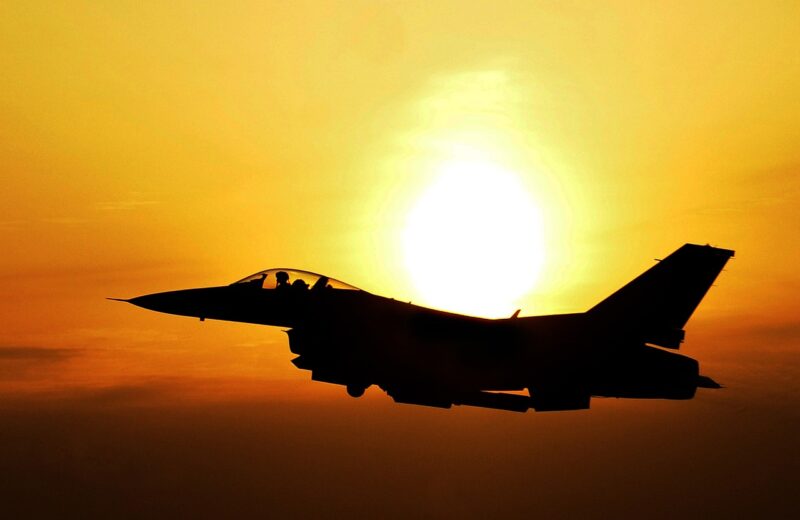The Evolution of Air Defense Systems in Protecting National Sovereignty
November 16, 2024

Air defense systems play a crucial role in safeguarding a nation’s sovereignty by detecting, deterring, and neutralizing aerial threats. Over the decades, these systems have evolved dramatically, adapting to changes in warfare tactics, technological advancements, and geopolitical dynamics. This article provides a comprehensive overview of the evolution of air defense systems and their vital role in modern national security.
1. Historical Overview of Air Defense Systems
The concept of air defense emerged during World War I when the first aerial assaults began to take shape. Initially, nations utilized simple anti-aircraft guns and balloons for reconnaissance to intercept enemy planes.
As air warfare evolved during World War II, air defense systems became increasingly sophisticated with the introduction of radar technology, which enabled better detection of incoming aircraft. The advent of fighter interceptors marked a significant step in protecting national airspace, as countries began deploying dedicated aircraft to confront aerial threats directly.
2. The Cold War Era: The Birth of Advanced Air Defense Systems
The Cold War brought a substantial arms race, resulting in the development of advanced air defense systems. Nations invested heavily in missile technology, culminating in systems designed to counter both strategic bombers and emerging missile technologies.
**Key Developments of this Era:**
- SA-2 Guideline: Developed by the Soviet Union, this surface-to-air missile (SAM) was one of the first mobile air defense systems, proving effective during the Vietnam War.
- NATO Integrated Air Defense System (NIAD): Compiled a network of radar systems and interceptors adapting to Cold War tensions, offering better integrated defense against bomber attacks.
- AWACS (Airborne Warning and Control System): Developed by the U.S., it combined radar and command and control elements, providing enhanced surveillance and target acquisition capabilities.
As a result, the effectiveness of air defense capabilities allowed several nations to deter enemies and assert their sovereignty through potent air power.
3. The Post-Cold War Transformations
After the Cold War, air defense systems underwent significant changes, focusing on adapting to new threats such as ballistic missiles and unmanned aerial vehicles (UAVs). Technology played a pivotal role in this transformation, and several notable advancements included:
- Patriot Missile System: Developed by the U.S., this system gained fame during the Gulf War, demonstrating its effectiveness against incoming missiles and providing a strong deterrent against aerial threats.
- Aegis Combat System: Used by the U.S. Navy, this system successfully integrates radar, missiles, and decision-making tools to combat both aerial and missile threats effectively.
- Iron Dome: Developed by Israel, this system has demonstrated remarkable success in intercepting short-range threats, reinforcing the vital necessity of situational awareness and rapid response capabilities in air defense systems.
The evolving geopolitical threats in conflict zones across the globe emphasized the importance of adaptable and intelligent air defense solutions for preserving national sovereignty.
4. The Modern Era: Integration of Technology and Cybersecurity
Today’s air defense systems are increasingly being integrated with advanced technologies geared towards enhancing effectiveness with multiple layers of defense:
- Network-Centric Warfare: Current air defense strategies rely on information sharing and coordination among various military branches and agencies, enabling a unified approach in attacks and defense strategy.
- Artificial Intelligence (AI): Algorithms are now employed for data analysis, threat recognition, and optimizing responses to air threats, making defenses faster and more accurate.
- Cybersecurity Measures: Modern defense systems must now contend with cyber threats aimed at disrupting command and control elements, prompting nations to bolster their cybersecurity capabilities alongside traditional air defenses.
The rapid evolution of air defense signifies a robust commitment to national sovereignty, showcasing a nation’s resolve in the face of diverse aerial threats.
5. Challenges Ahead: Addressing New Threats
As air defense systems continue to advance, new challenges also arise. The integration of hypersonic missiles, drones, and other asymmetric warfare tactics has raised crucial questions about the efficacy of existing systems.
Key challenges include:
- Rapid Technology Development: Balancing the pace of technological advancements with operational readiness and investment in R&D is essential to ensure that nations do not fall behind in their air defense capabilities.
- Cost Implications: Developing and maintaining advanced air defense systems demands significant financial investments that can strain national budgets when competing priorities emerge.
- Geopolitical Dynamics: A rapidly changing global landscape requires nations to rethink strategic alliances in technology sharing and collective defense operations to enhance overall air defenses.
Proactive measures must be enforced to ensure the survivability and reliability of air defense systems amidst evolving global threats.
6. Conclusion: The Future of Air Defense and National Sovereignty
The evolution of air defense systems reflects an unwavering commitment to protecting national sovereignty against aerial threats. From the rudimentary methods of World War I to the sophisticated, integrated systems of today, air defense continues to adapt to meet changing threats in an increasingly complex global environment.
Investing in next-generation air defense technologies will be paramount to preserve national security and maintain sovereignty in the face of emerging threats. As nations strive to bolster their capabilities, the future of air defense promises increased resilience and safeguards for a nation’s airspace.
The ongoing evolution of air defense is not merely a military concern; it is inherently tied to the sovereignty, integrity, and security of nations worldwide.







